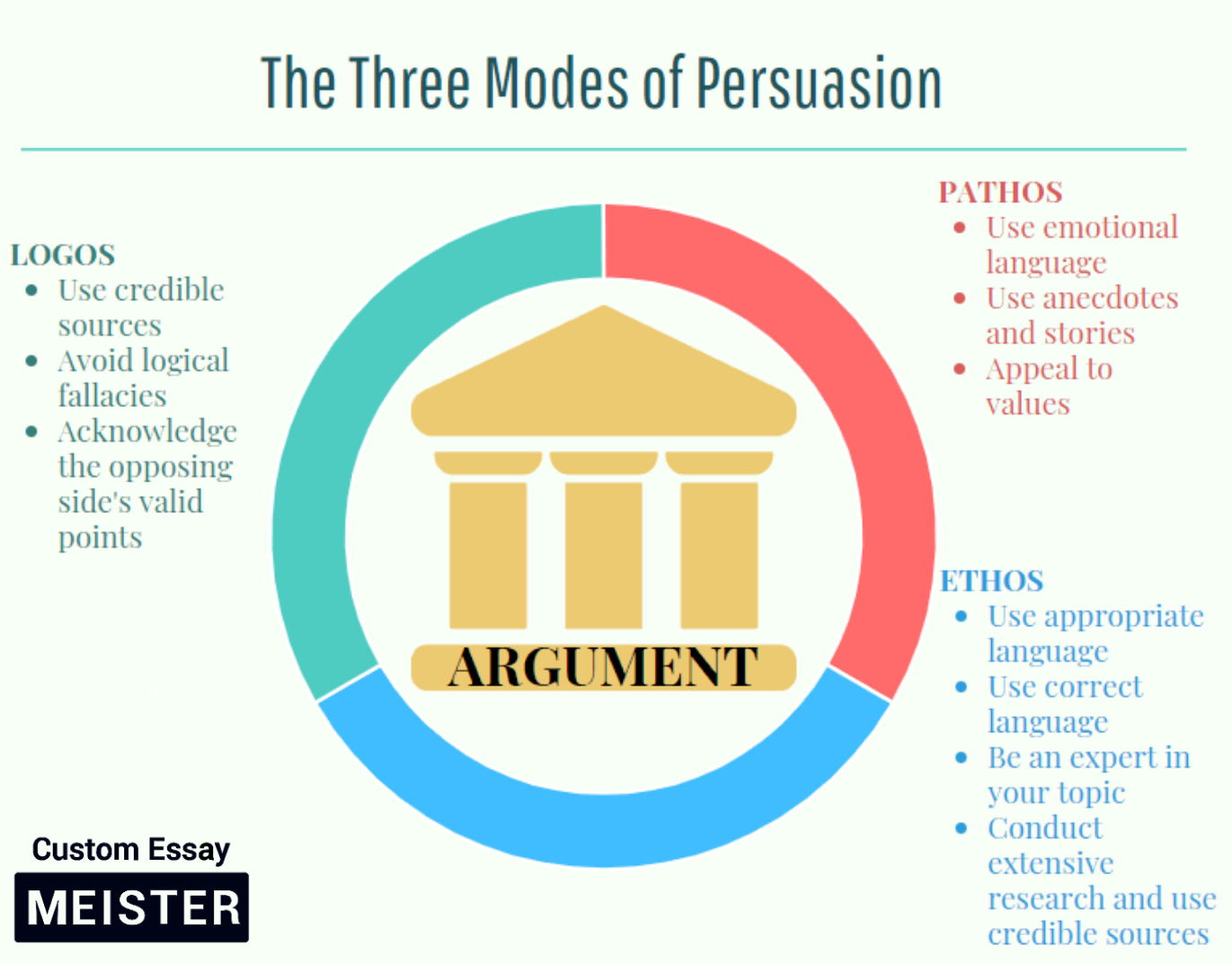The Three Modes Of Persuasion: Ethos, Pathos, And Logos
C onvincing other people is a difficult task. This is especially true if they do not know you, have an opinion or viewpoint different from yours, and unaware of the facts surrounding your topic. The good news is, there are established modes of persuasion that you can follow: ethos, pathos, and logos. Whether you are writing a persuasive essay, crafting an argumentative paper , or drafting a speech, knowing these three modes of persuasion is a great advantage. Using ethos, pathos, and logos is a time-tested strategy for enhancing your ability to convince your readers and audiences.
Ethos
The first of the three modes of persuasion is ethos . The Greek word for “character,” ethos basically refers to your credibility as the author or speaker. In other words, ethos is the impression that you give to your reader or audience that you are worth listening to. There are ways to build ethos:
Use appropriate language
Using language appropriate for the reader will increase your chances of being relatable. For instance, if your reader is the general public, you will do better to use simple vocabulary to make your points easier to understand. By contrast, a more advanced reader would likely require a more advanced language. Highly technical language or pure jargon, however, should be avoided unless absolutely necessary.
Use correct language
Correct language is also essential. Grammatical and typographical errors can easily cast doubts on credibility.
Be an expert in your topic
Make sure that you are knowledgeable about your topic since it improves your ability to discuss the topic efficiently. Chances are, the reader will know if your paper is well-informed or not.
Research extensively and use credible sources
Conducting extensive research and using credible sources also add to your credibility as the author. Authors are generally perceived as more trustworthy if they are presenting evidence from professional, scholarly, and expert sources as opposed to sources whose contents cannot be verified.
Pathos
The second of the three modes of persuasion if pathos , which means “suffering” in Greek. Pathos is basically defined as an appeal to emotion. Pathos is often used to capture the sympathy of the audience by provoking the desired emotional response. Pathos can be utilized through the following:
Use emotional language
Using emotional language can help you arouse your reader’s emotions. Emotional language can take different forms and it largely depends on the topic. Arguing that plastics should be banned? Describe the horrible state of our environment. Advocating for social change? Learn from the lofty language of Martin Luther King, Jr.’s “I Have a Dream.”
Use anecdotes and stories
Sometimes, telling an anecdote or story to illustrate your point can win over the reader’s sympathy. This is because stories, as opposed to hard facts, give the reader something to relate to. By telling a tale, you are asking them to place themselves in the same situation.
Appeal to values
Finally, you should appeal to your reader’s values. This requires you to identify the values held by your reader and uphold those values in your arguments. For example, if you’re arguing for political reform and your reader values justice, you may point to the injustice that often results from governmental corruption. Note that appealing to values requires you to know what values your reader has.
Logos
The third mode of persuasion is logos . The Greek word for “word,” logos is an appeal to logic. In other words, logos a mode of persuasion that utilizes reason or logic to convince the reader or audience. Logos can be developed in the following ways:
Use credible evidence
Again, presenting facts from credible sources are essential in developing logos. For obvious reasons, reliable sources by experts in the topic are far more trustworthy than unreliable ones written by anonymous authors.
Avoid logical fallacies
Logos is only strong if the arguments are grounded on reason. So present valid arguments and avoid logical fallacies such as statements that are irrelevant, veer away from the topic, or attack the opposing side in unfair ways.
Acknowledge the opposing side’s valid points
Sometimes, acknowledging that the opposing side’s valid points can enhance logos as it shows that you are capable of recognizing reasons when you see it. However, try to strengthen your position by presenting rebuttals to counterarguments and establishing concessions.
In the end, the three modes of persuasion are excellent appeals that you can use in boosting your ability to convince your reader. Remember, though, that like the Three Musketeers, ethos, pathos, and logos work best when they are together.
Ghostwriting services for students
Writing a persuasive essay or argumentative essay can be difficult if you lack the motivation to do it. You should be able to firmly express your stand on a certain issue but if you find yourself struggling to do so, you might want to resort to CustomEssayMeister's ghostwriting services. Our ghostwriting services are provided by professional writers who have their own expertise on different fields, so rest assured that there is a writer that can cater to your needs. If you find yourself needing a ghostwriter, message us and we will be glad to help you.
